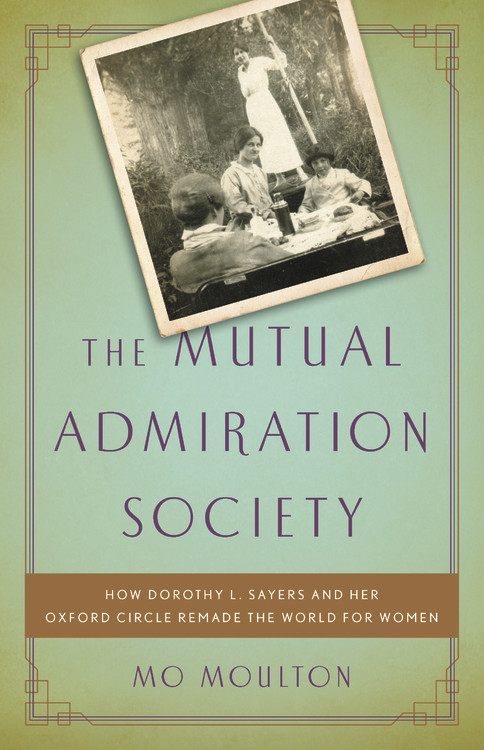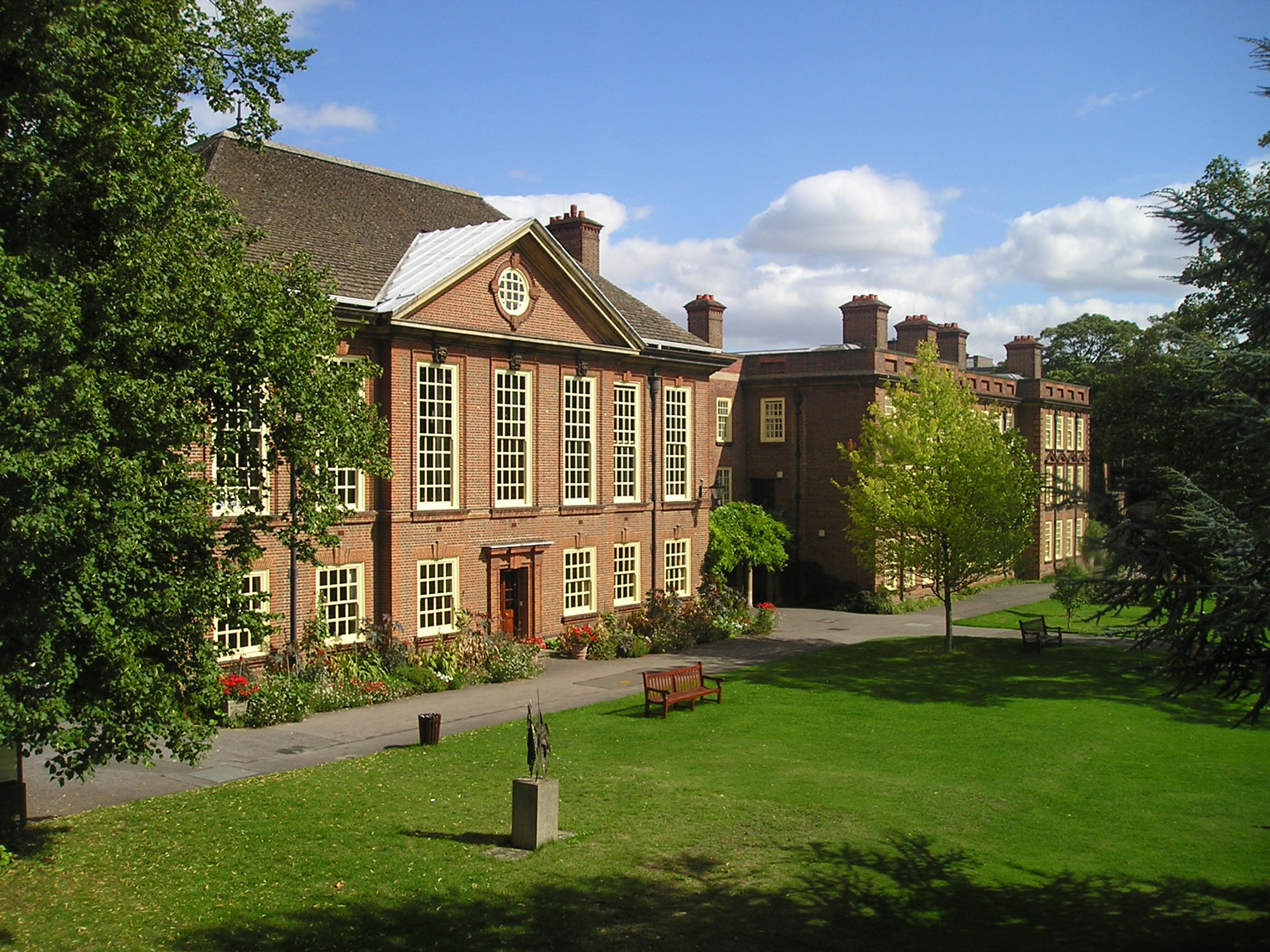
The Hall (left) and Maitland Building (right) of Somerville College, Oxford, 2006. Photograph by Philip Allfrey. Wikimedia Commons (CC BY-SA 3.0).
On October 11, 1912, Charis Barnett and her mother took the train from London to Oxford. Her aunt met them at the station, and together the three women went to Somerville College, where Barnett planned to spend the next several years living and studying. They spent the day readying her room, breaking only for lunch at the Cadena Café in Cornmarket, where, as the advertisement said, dinners, luncheons, and afternoon teas were “daintily served with dispatch.” Then Barnett brought her mother back to the railway station. After tea, they parted: her mother went home, and Barnett returned to Somerville to begin her university education.
In its own simple way, the scene, which was repeated dozens of times around the ancient city that week, was remarkable. Barnett came from a middle-class family. She was not part of the vast class of young women in Victorian and Edwardian Britain who were expected to work as a servant or in a factory. Had she been born earlier, or into a family that cared less about educating its daughters, she might have assumed she would remain at home until (and unless) she married. Instead, she left home to study, following in the footsteps of centuries of men but only a few short decades of women. Despite the poignancy of leaving her mother at the station, she was already ecstatic the next day, writing home: “I am very happy here—I don’t know of anything that I would alter if I could.”
Somerville College, one of the first women’s societies, or colleges, at Oxford, was well designed to foster the transition between a sheltered girlhood and modern adulthood. The culture it created honored both the ideals of middle-class femininity and the traditions of the university.
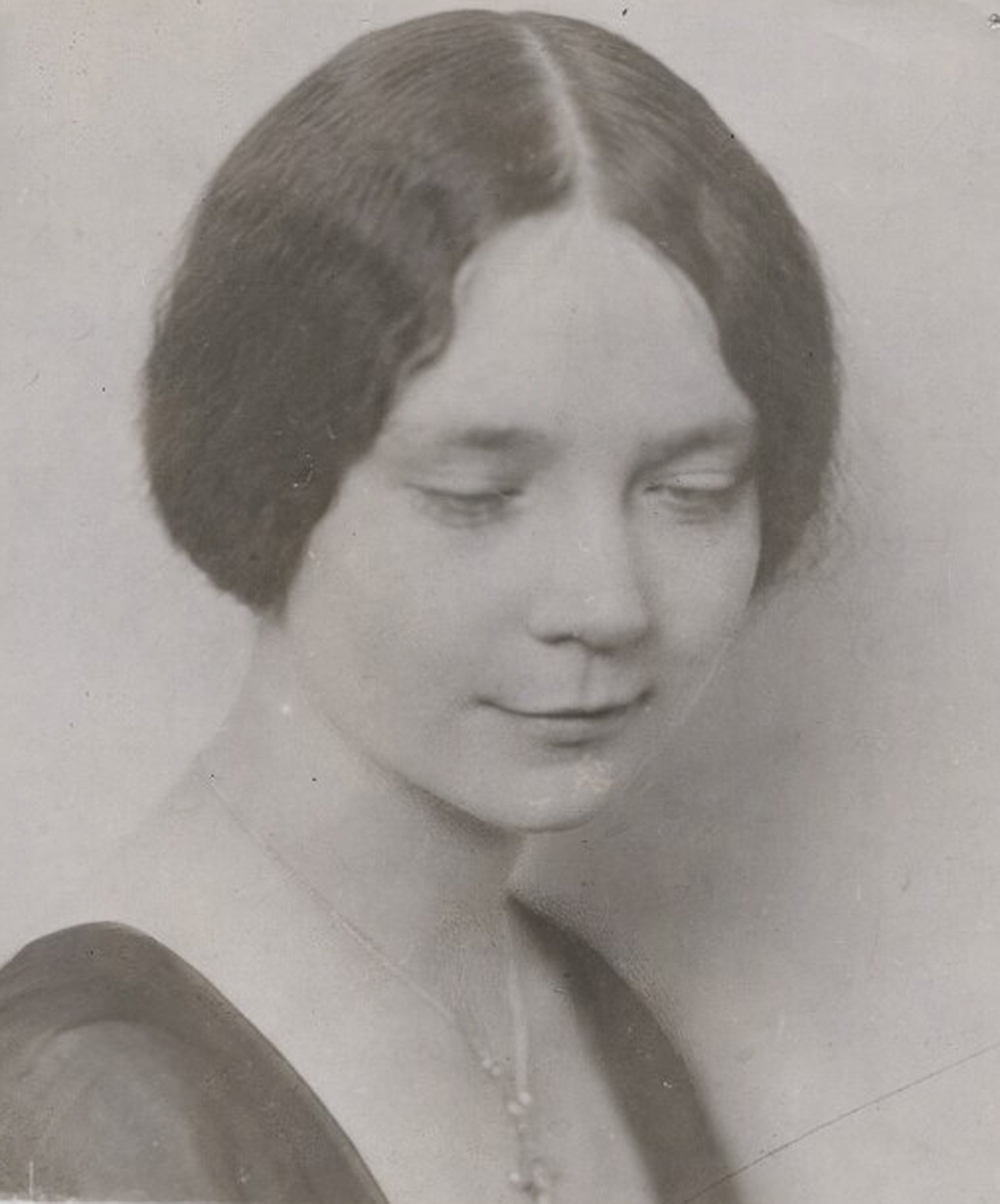
Although Somerville College was only thirty-three years old, the cohort of 1912 entered “a ready-made inheritance” housed in an appropriately imposing edifice. Beyond the tiny entrance was a large quadrangle that housed one hundred students, as well as common rooms, dining facilities, and a library. When it was founded, Somerville had been in a manor house, but over the intervening years it became less and less like a Victorian home and more and more like any other Oxford college. The construction of Maitland Hall and a new entrance in the summer of 1913 would plunge the college into what future novelist Dorothy L. Sayers called “a most grisly turmoil,” with “dust & workmen everywhere.”
The buildings were tangible evidence of the progress made toward including women in higher education at all levels. This had begun with the establishment of the Ladies Education Associations in the mid-nineteenth century, which offered instruction for women as well as support in preparing for university examinations. The first university in Britain to offer degrees to women was the University of London, in 1878. By the beginning of the twentieth century, women could study and take degrees at numerous universities in Britain and elsewhere, but not yet at Oxford. Oxford resisted in no small part because its characteristic traditions—boat racing, formal debating societies, and so on—were designed, in the nineteenth century, to promote a professional, imperial, masculine elite.
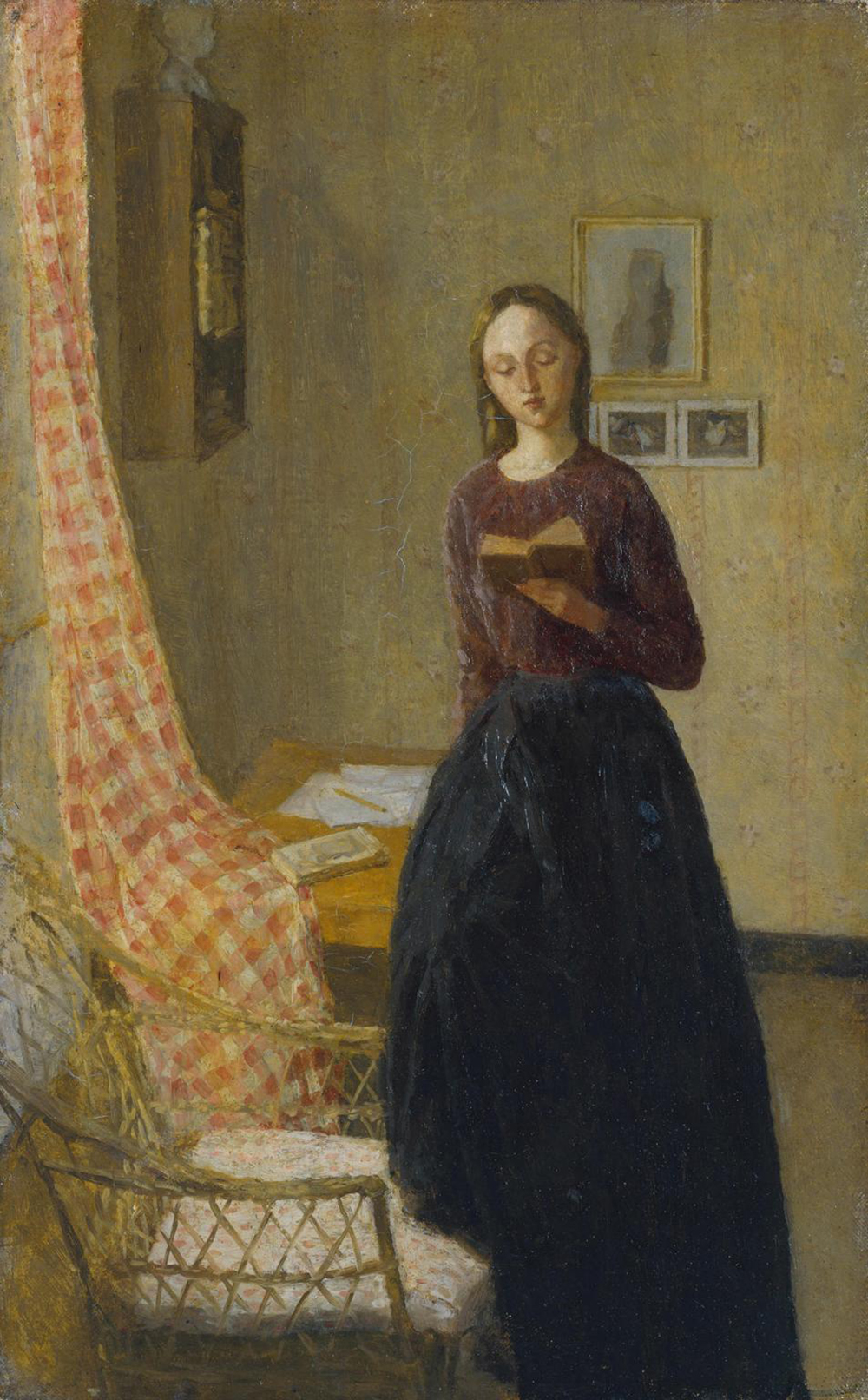
Female students living at Oxford were a curiosity, and the spectacle of young women living the kind of studious, single-sex college life that had for so long been exclusively male attracted attention and questions. Writing to her fellow student Catherine “Tony” Godfrey during Easter vacation in 1913, Sayers complained at length about it:
I’m simply dead sick of telling people about Oxford, & how many there are of us at Somerville & how many dons there are, & why have I got to do an exam in German when my subject’s French, & do I see much of the Prince of Wales, & do we have lectures with the men, & is there a tennis-court at Somerville, & what is the name of our Head, & what times are lights put out at night, & how do we get milk when we make our own tea, & may we go to the theater, & have I made any particular friends, & what sort of people live in my passage, & have I one room or two & will the new buildings be finished when we get back, & do the maids wear caps & aprons, & when was the college founded & are there more women students at Oxford or Cambridge?
But this was at home. Back within the walls of Somerville, students were sheltered from the limelight and assimilated into an ordinary college life.
Once bags were unpacked and the dining hall had been located, the young women of Somerville embarked on the serious task of finding their place in the social sphere of the college. The older students alternately ignored the first-years and examined them with unsettling thoroughness. But it was among their own number that the class of 1912 found the strongest connections.
Cocoa parties and literary meetings unfolded in rooms carefully decorated to reflect the character of their inhabitants and to maximize the opportunities for socializing. Vera Brittain, another Somervillian who would go on to become a famous author, mocked the predominant look as only superficially distinctive: would it be “flowery chintz and pink cushions,” or “green chintz and orange cushions”? But Amphilis T. Middlemore, Dorothy Rowe, and another student went “into ecstasies” over Barnett’s room, which featured “an armchair, a corner-cupboard, and a most useful wooden fender which provided extra seating” for parties of up to fourteen fellow students. The college servant who cleaned her room called it “the prettiest room in College,” while other people, perhaps less diplomatically, remarked that she must be “an only girl” to have her parents decorate her room so lavishly. Less extravagantly, future novelist Muriel “Jim” Jaeger had a chair, rug, and screen shipped to her room. Sayers, for her part, obtained a large armchair, christened G.K. Chesterton after the popular and rotund author. One Sunday found her writing letters “lying on my back before the fire, my head supported on three cushions & my feet” in the chair, “far too hot & comfortable to get up & sit at a table.”
But, ultimately, the young women of Somerville were not living as daughters in a family setting. They were students, in a context that naturally encouraged both intellectual and personal independence. They held college meetings, where they democratically set rules about such things as work hours and noise levels.
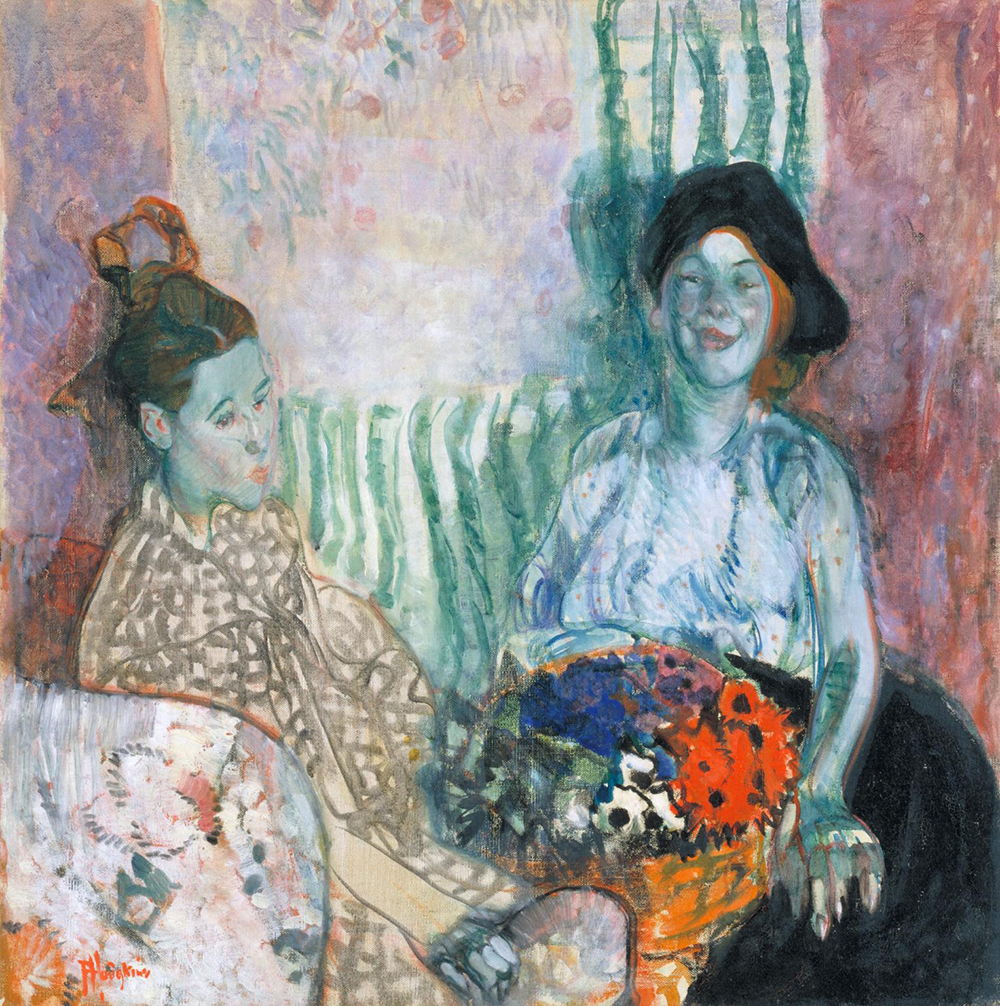
Sayers was the senior bicycle secretary, and at a meeting in October 1914 she “reminded people that bicycles must be marked with the owner’s name and kept in bicycle sheds,” not left around the college, where they would be impounded and held until a fine was paid.
Even parties in students’ rooms could be seen in a different light. Take Brittain’s sensationalized description of the atmosphere of an evening Somerville “cocoa-party.” The air, she wrote, “was heavy with the fumes of cocoa and cigarette smoke; crumbs of ‘College Creams’ and the remains of some over-boiled milk clung to the sticky hearth.” While sticky spilled milk conjures up spoiled children, the presence of cigarette smoke reveals that these girls were modern women, embracing freedoms, such as smoking, that were traditionally denied to middle-class women and even prohibited at other women’s colleges. The fact that smoking was permitted for Somerville students was a source of immediate joy to Sayers, who became known, in Jaeger’s semi-fictionalized account, for her “exquisite smoke rings.” Somerville’s leaders were well aware that smoking was associated with looseness and modernity, but they declined to regulate their students. Their decision was not welcomed by everyone. When Barnett ordered a cigarette box carved with the Somerville arms, she encountered “a disapproving shopman,” who said, “ ‘I’ll carve you a sweet-box with the Somerville arms.’ I replied that he could call it that if he liked, but that it would hold cigarettes.”
Once Somerville students left the college gates, they found themselves under the scrutinizing gaze of the wider university. Even before she spoke, a Somerville student was often judged on what she wore. Fashion trends became fodder for debate. In the fall of 1912, for instance, there was a “craze for untidiness” among Somerville students and their contemporaries at other women’s colleges. Sayers scathingly described a friend who was unbearably “self-conscious in her ungainliness.” But by the following spring, the pendulum had swung in the other direction, and everyone seemed to be wearing “fearfully smart” new clothes. Sayers and a friend attended church one Sunday in skirts “so tight it took us about ten minutes to kneel down.” Such experiments in fashion brought down official wrath. In 1914 the principal of the Oxford Home Students received “a very tiresome complaint that the men examinees are disturbed by the way our students sit in their tight skirts and show their legs.” Even within Somerville, Sayers was gently encouraged to dress a bit more quietly when she arrived at breakfast one morning “wearing a three-inch wide scarlet riband round her head and in her ears a really remarkable pair of earrings; a scarlet and green parrot in a gilt cage pendant almost to each shoulder and visible right across the hall.”
When Barnett wore a particularly pretty shot-silk dress, a porter guarding a lecture hall briefly mistook her for an American tourist and nearly barred her from entering. Then a male undergraduate remarked appreciatively, “I suppose there are two kinds of girl at Somerville—freaks and girls like you!” Freak, here, meant someone eccentric in her devotion to learning or other esoteric pursuits and echoed the popular slogan “Somerville for freaks.” The incident suggests the pressures on Somerville students to be, simultaneously, sufficiently somber in their clothes to look like worthy students and yet fashionable enough to be seen as attractive rather than freakish by potential male partners.
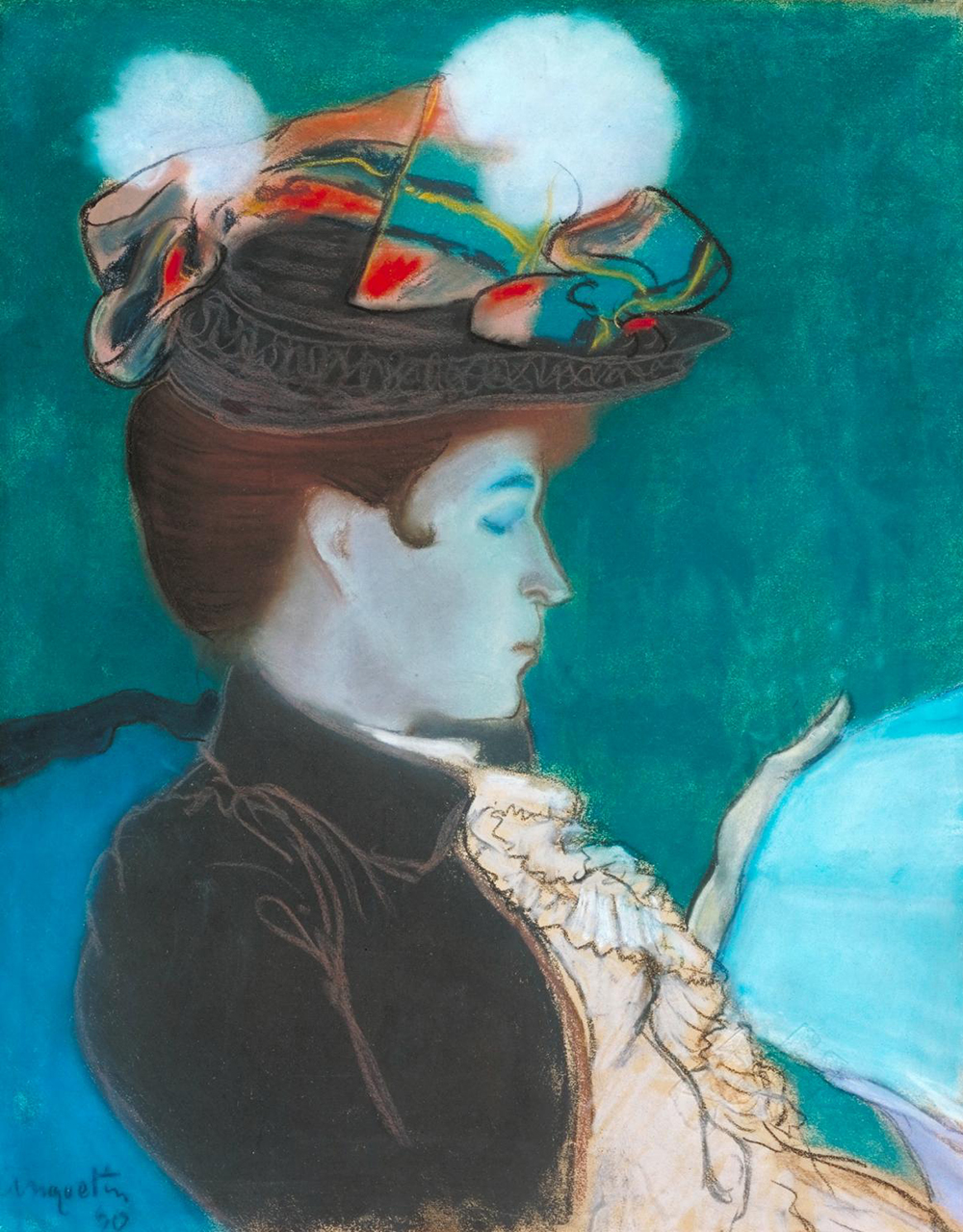
These students were sensitive to the nuances of these stereotypes. Rowe proposed a party that would feature a prize for the most “woman-studentish” guest. The plan was ultimately abandoned as too dangerous. These women were students, but they were afraid that, inadvertently, they would appear too woman-studentish and join the ranks of women mocked for their intellectual pretensions. Barnett even reassured her parents that she’d heard Somerville had a comparatively high marriage rate for a women’s college. In fact, the postwar generations of university women would marry more frequently than the first female university graduates, though educated women were still less likely to marry overall.
Such skirmishes over appearances reveal a deeper truth: Somerville College stood at the margins of Oxford, its students not yet fully accepted as equal. At a dance, one man made himself obnoxious by comparing Somerville with “Oxford colleges,” highlighting the fact that it was still, technically, only an affiliated women’s society. In one logic course, men and women usually sat on opposite sides of the room, with the men sometimes spilling over into the front row on the women’s side. One day, Barnett and Rowe were seated in the second row on the women’s side. When they collapsed with laughter before lecture started as the result of an in-joke about the porter, first one man and then two more transferred to the row in front of them. Barnett didn’t explain exactly why, but evidently everyone found the whole thing hilarious, especially as the men began a bout of ridiculous fake coughing to spur their giggling on. Integration in the classroom was still novel enough to sustain this rather silly physical comedy.
In her German classes, Sayers was frequently the only woman in the room. Even in the literature class where she had a female companion, that student “never says a word & never lifts her eyes from her book.” When Sayers was the only female student to take a language exam, she found herself seated “severely isolated like a leper” in one corner of the room. When she’d first arrived, “I wandered into the men’s part of the room,” and the doorkeeper “rushed at me with wildly waving arms & a terrified expression, & shooed me away to my seclusion like an intrusive hen.” Yet even that could not suppress Sayers’ intellectual self-confidence. It must have been disconcerting watching men of mediocre intelligence and attainments earn Oxford degrees while all women were still denied them, though Sayers did not comment directly on the point. Instead, she emphasized her feminine advantages. During an oral examination, one examiner raised a potentially thorny point, saying that he was “very much surprised” to see that Sayers “considered Schiller’s Robbers a pleasing play.” Sayers admitted that “my heart sank into my boots,” but she decided to try “an individual touch.”
“Relying on the fact that I had put on my best coat & skirt & a becoming hat, I assumed my most womanly smile & said: ‘Oh! don’t you think it is?’—He smiled—I was encouraged to give my reasons—he smiled & agreed. At any rate he passed me.” The “intrusive hen” would find ways to fight back.
Excerpted from The Mutual Admiration Society: How Dorothy L. Sayers and Her Oxford Circle Remade the World for Women by Mo Moulton. Copyright © 2019 by Mo Moulton. Available from Basic Books, an imprint of Hachette Book Group, Inc.
